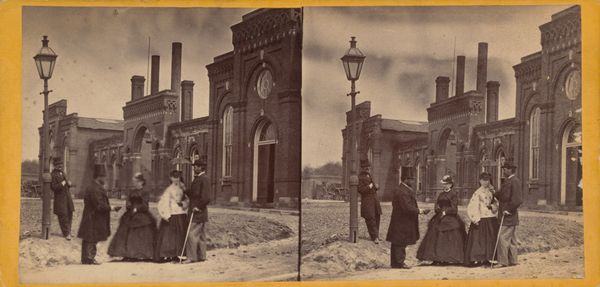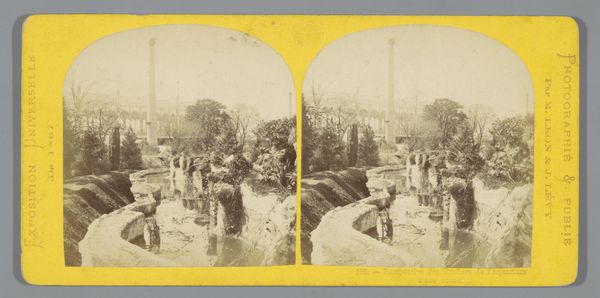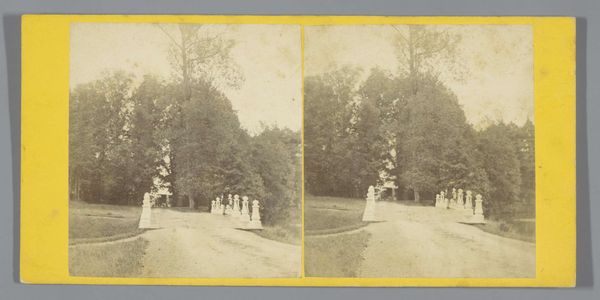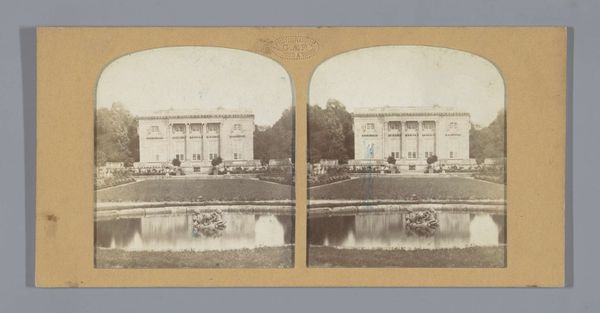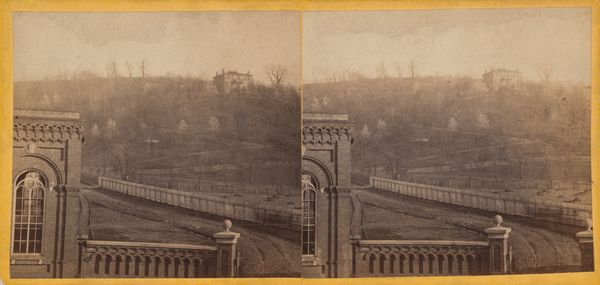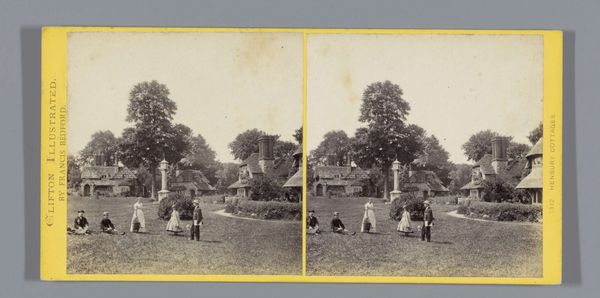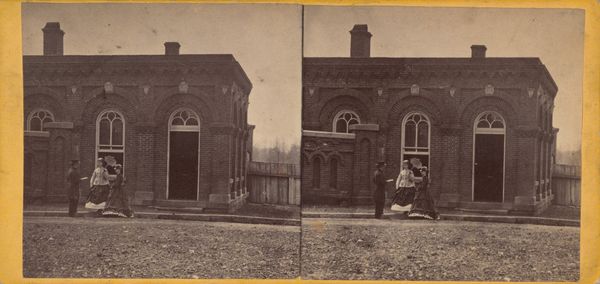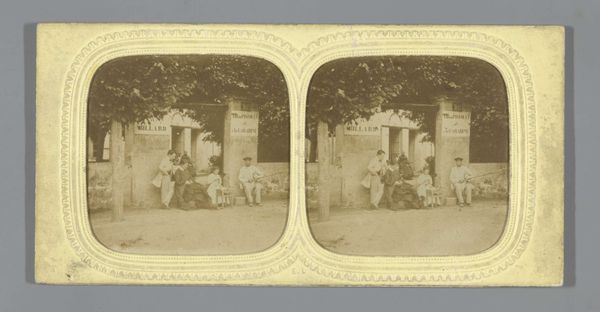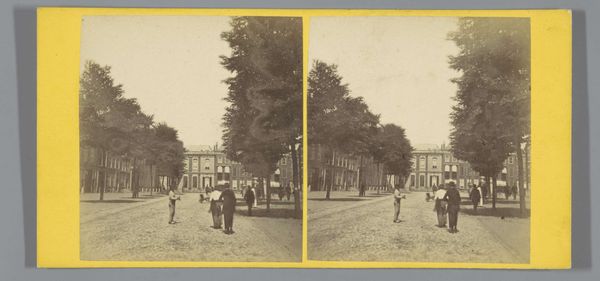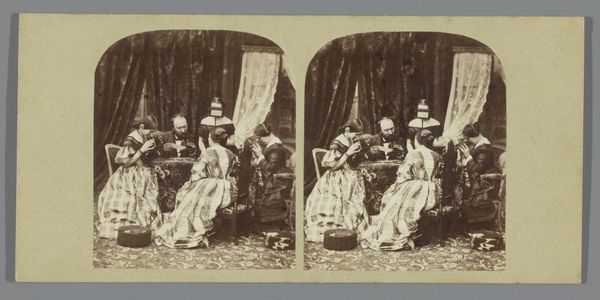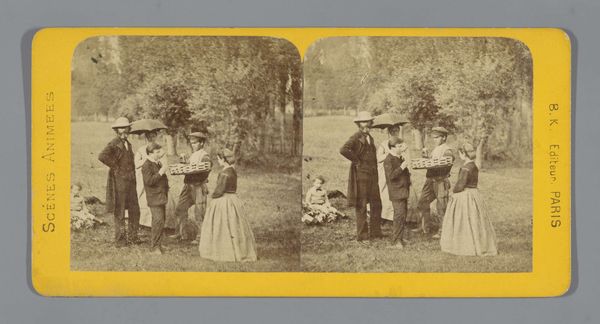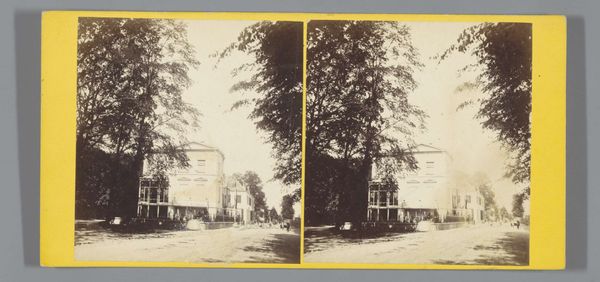
Dimensions: image/sheet: 7.8 × 8 cm (3 1/16 × 3 1/8 in.) image/sheet: 7.8 × 8 cm (3 1/16 × 3 1/8 in.) mount: 8.1 × 17.1 cm (3 3/16 × 6 3/4 in.)
Copyright: National Gallery of Art: CC0 1.0
Curator: Here we have a gelatin-silver print from around 1865, attributed to Thomas H. Johnson, showing the Standard Petroleum Refinery in Pittsburg, Pennsylvania. Editor: Immediately, I'm struck by the photograph's muted palette and its surprisingly formal composition. The group of figures arranged in the foreground offers a strong visual counterpoint to the looming industrial architecture behind them. It creates a curious sense of scale and the formal dress contrasts starkly against the industrial setting. Curator: Absolutely. The figures grouped in the foreground almost serve as symbolic stand-ins for the domestic sphere suddenly thrust into the age of industrial expansion and innovation. These images circulated as stereoscopic cards. Consider what a Victorian family made of it. This bridge between private and industrial worlds reflects a society on the cusp of massive change, wouldn't you agree? Editor: Indeed. The composition relies on very clear, almost geometric arrangements of the figures. The women’s dresses create large dark masses, echoed by the darker silhouettes of the men, contrasting sharply with the grey-toned sky, while the architectural features give it a structural anchor. Notice how the curves of the arches play against the sharp lines of the fences, how the rhythm of the light picks out different facets? Curator: I also find that backdrop intensely powerful. That skeletal architecture isn't necessarily brutalist but in retrospect it does possess some gothic elements. There are several layers of psychological associations at play here. Does that structural style, emerging right on the heels of the Civil War, signify a rebirth of hope—the modern age rising from ashes—or does the landscape already represent a descent into a more destructive and polluted world? Editor: I think the ambiguity in tone—oscillating between documentary record and Romantic aesthetic—keeps us engaged. It offers both structure and sentiment, a visual tension mirroring the era's own uncertainties about technology and industry. Curator: It definitely invites ongoing investigation, particularly into how industrial progress was viewed and integrated into the visual culture of its time. A compelling work! Editor: Precisely. A snapshot of a moment, held together with form and symbolism.
Comments
No comments
Be the first to comment and join the conversation on the ultimate creative platform.
